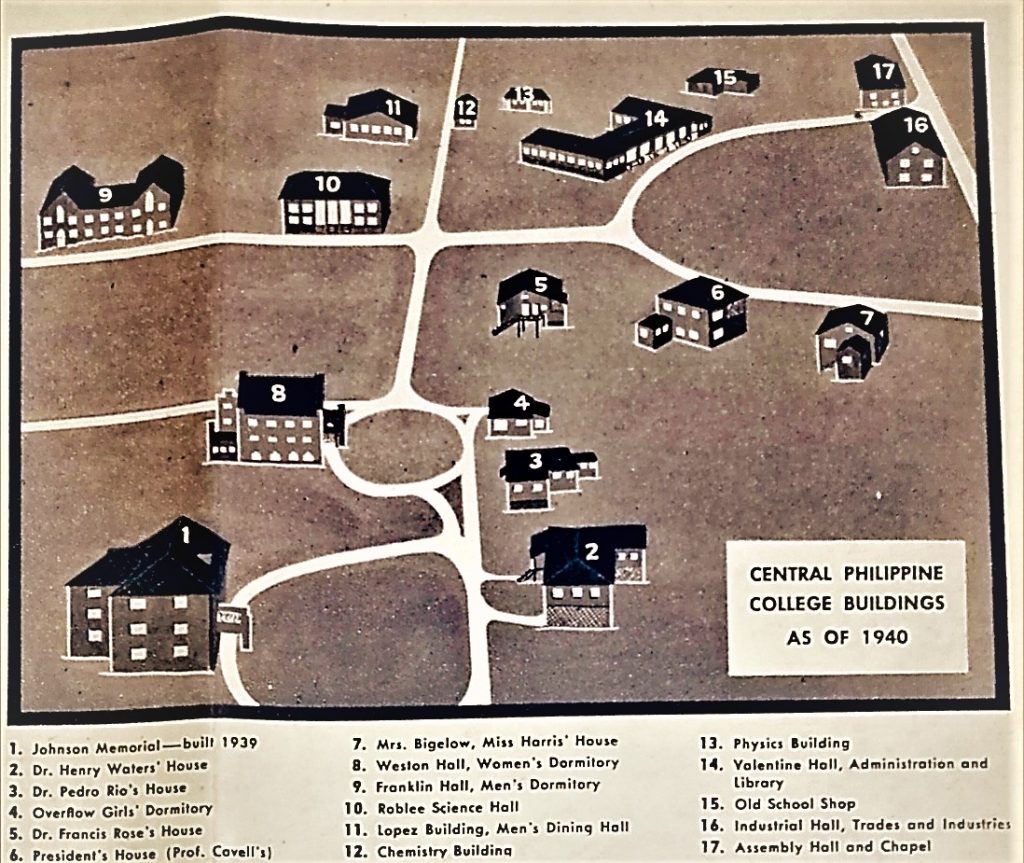by Francis Neil G. Jalando-on
Rev. Dr. Francis Howard Rose was optimistic to come back and re-open Central Philippine College after the war. Although he did not see the campus rise again, his legacy is forever built in the tradition of excellence and faith of Centralians.
Before the American Baptist missionaries evacuated into the mountains of Tapaz, Capiz in 1942 due to World War II, Rev. Dr. Francis Howard Rose was the Acting President of Central Philippine College from 1938 to 1941. Before that, he was the Acting Principal of Jaro Industrial School from 1914 to 1916.
There were no classes during the war and technically, one can say that Dr. Rose was still the president during that period. Indeed, Dr. Rose still acted in that capacity when he continued to monitor what was happening in the campus.
In a letter dated May 18, 1943, marked “Strictly Confidential” (due to the content of the letter that described their whereabouts), and addressed to a certain “Dr. Decker and all at the Rooms” of the American Baptist Foreign Missionary Society in 152 Madison Avenue in New York, Dr. Rose narrated a report of what happened to the campus of CPC.
An aerial map of Central Philippine University before World War II.
Here is a portion of his letter:
“At C.P.C. the following have been destroyed: 1. All our books in both libraries, together with the buildings housing them, i.e., the building named after the former Industrial School head (note: Rose was referring to William O. Valentine Hall) and the new building named after the first head of the B.M.T.S. (note: Rose was referring to Anna V. Johnson Hall). These constitute by far our greatest loss, equal perhaps to 50% of our C.P.C. property evaluation, or close to $200,000, as our recent inventory rated them. These were burned by our guests; 2. The chapel has been burned with all furniture except what had been previously looted, together with our new three-manual pipe organ (note: this was located in what is now the Kabalaka Center/Medical Laboratory Clinic); 3. Industrial Hall containing our campus lighting plant and our mission press (which was almost half paid for) (note: this was located in front of the Half-moon drive near the Lopez Jaena St.); 4. The frame house near the road (where the widow lived); 5. The concrete residence, gutted by fire. Nos. 2,3,4 and 5 were burned under the “scorched earth” policy – folly in this instance, as only a very temporary gain was obtained. Still undamaged are, therefore: 1. The Dining Hall for men; 2. The Men’s Dormitory; 3. The Women’s Dormitory; 4. The Science Building; 5. The temporary chemistry building; 6. The temporary Physics Building (new), and 7. Four remaining missionary residences, all frame houses. Apparatus and equipment has very likely been taken or looted.”
Dr. Rose was optimistic that they would come back and re-open CPC after the war. He wrote, “However, there is still a considerable amount of property available for reopening our work when hostilities are over, as the above list will suggest, especially to you who have seen the campus.” But this was not meant to be. Seven months after the letter was sent, the 11 American Baptist missionaries, including Dr. Rose and his wife Gertrude, were martyred because of their Christian faith in Hopevale, Tapaz, Capiz.
Dr. Rose was never able to report anymore because of his death. But after the war, the reported undamaged buildings—Weston Hall, Franklin Hall, and Roblee Hall—were later destroyed during the war.
Recently, some archived materials have come to light: an aerial sketch of the campus of Central Philippine College before World War II and another aerial sketch of the destruction that happened in the campus after World War II. What is very interesting in the campus map sketch is that House No. 5 was the home of Dr. Rose and his family. It was destroyed during the war. This was the main reason why the CPC administration decided to build the original Rose Memorial Hall in the very place where Dr. Rose lived. It was indeed a fitting memorial.
On December 17-20, 2018, the Convention of Philippine Baptist Churches will spearhead the Hopevale Diamond Commemoration to be held in Central Philippine University, Filamer Christian University and in Hopevale, Tapaz, Capiz. If you attend, you will surely hear more stories about these American Baptist missionaries and their Filipino counterparts.


